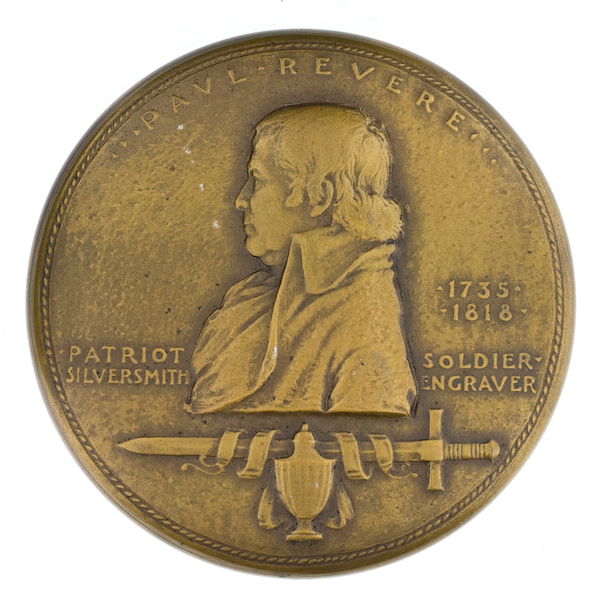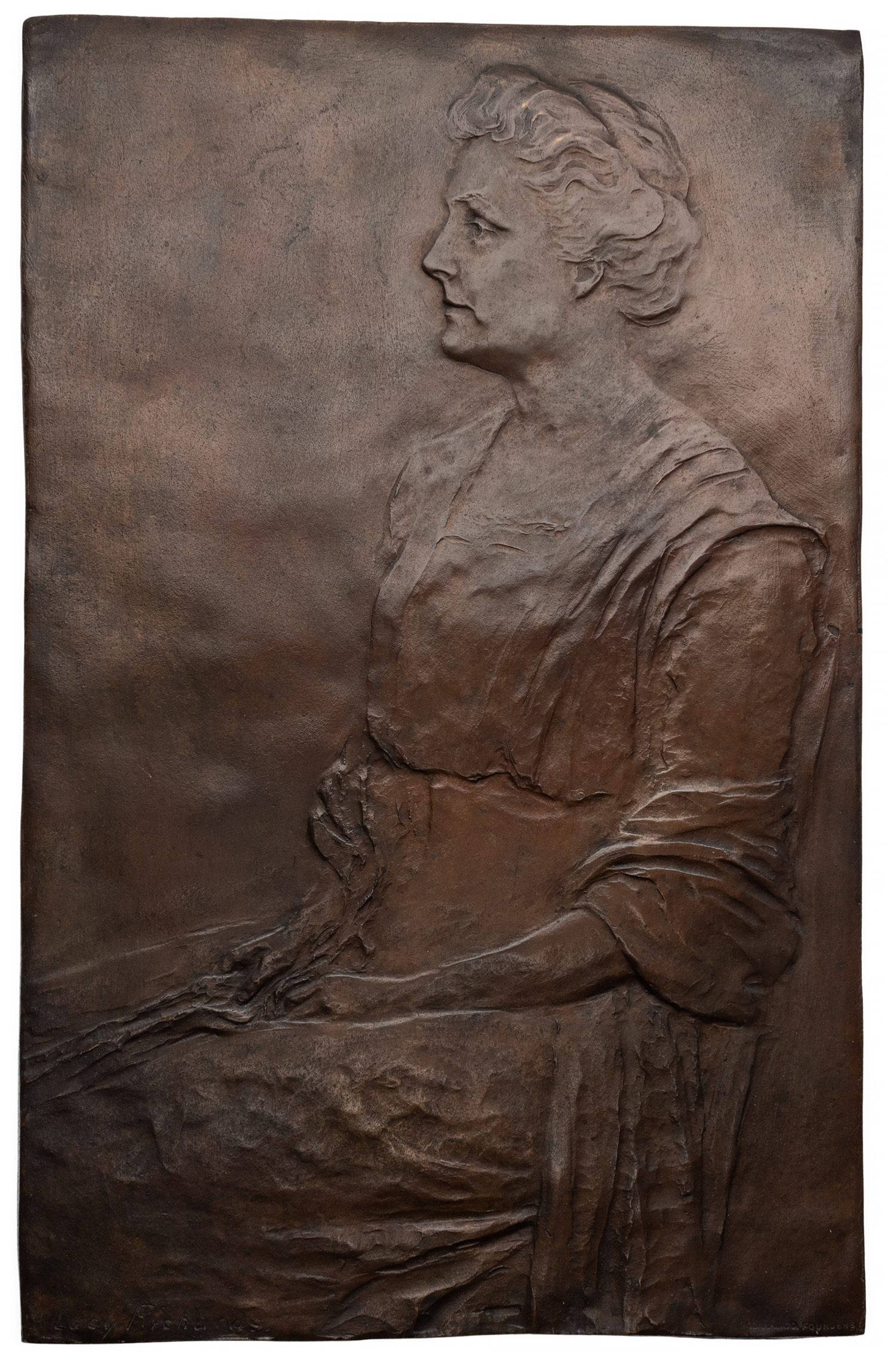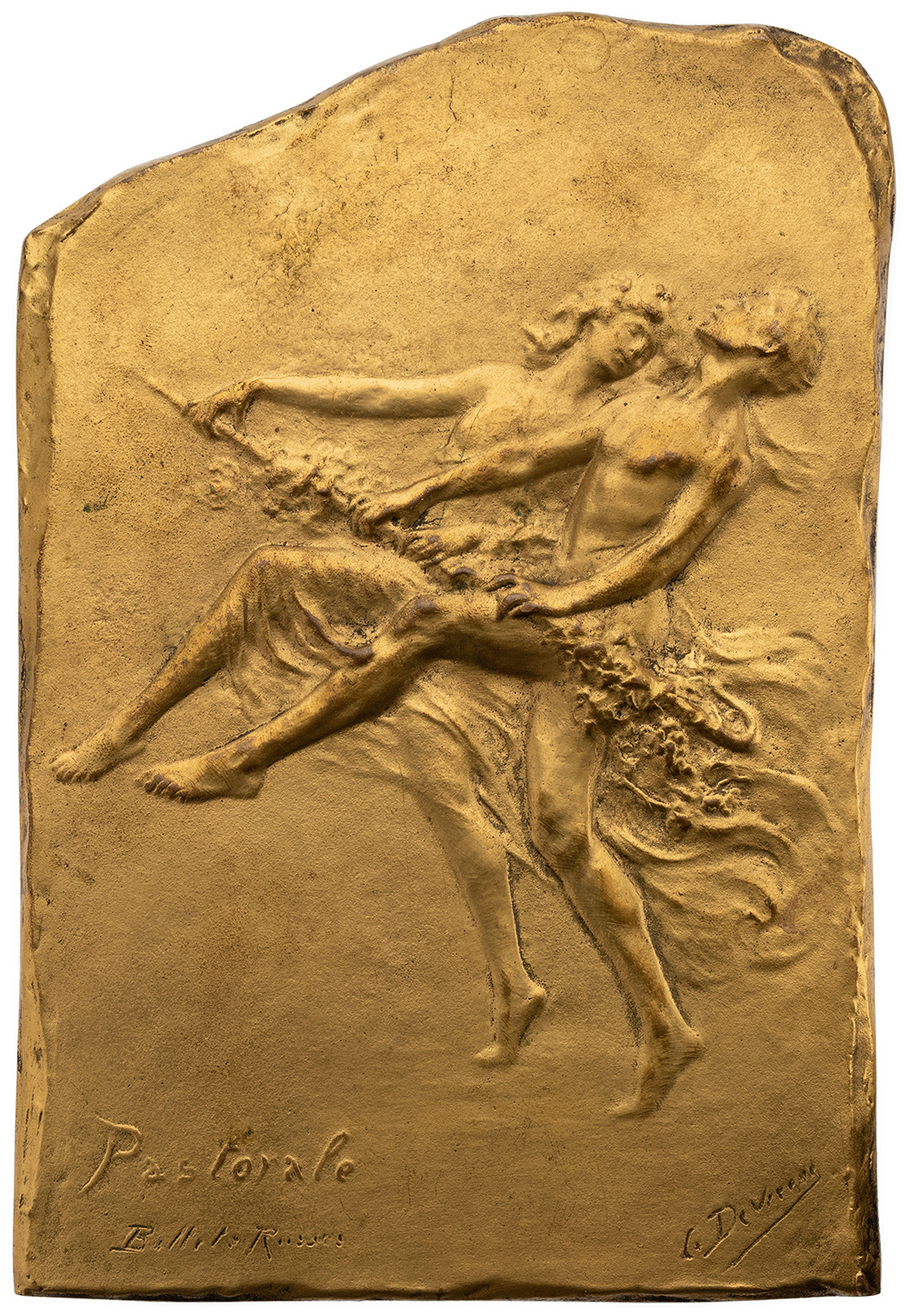The Reign of Peter the Great as Represented in the ANS Collection
Among the many interesting pieces in the Society’s collections are a group of Russian specimens that relate the transformation of insular Muscovy into a major European power by Peter the Great (1672–1725, fig. 1). This process started when the young Tsar Peter I first journeyed to Europe in 1697–1698.

He traveled incognito, as a member of a “Grand Embassy”, but this was not a diplomatic mission. His main goal was to study new developments in European technology, especially shipbuilding. As a result, during Peter’s reign, Russian industry and armed forces were completely reorganized, and the formerly archaic country became a successful new maritime power. Russian victory in the Great Northern War (1700–1721) destroyed Swedish military hegemony in northern Europe and let Russia expand to the Baltic Sea, where in 1703 Peter founded his new capital, Saint Petersburg. This exquisite city became Russian’s “window to Europe”.


Peter decided to commemorate the military success in the Great Northern War by issuing a special medallic series, which was designed and executed by the famous German medalist Philipp Heinrich Müller (1654–1719). The ANS has seven of the twenty-eight medals of this series. Two of these beautiful pieces, the silver medals commemorating the capture of Nöteborg (Schlisselburg) in 1702 (fig. 2) and the Battle of Lesnaya in 1709 (fig. 3) are originals.


Other medals of this series in our collection, like a bronze medal dedicated to the foundation of St. Petersburg (Fig. 4.), are struck from later copies of Müller’s dies, made at the St. Petersburg mint during the reign of Catherine the Great (1762–1791).


Peter’s extensive reforms required substantial funds, and one of his great achievements was a reform of the Russian monetary system. He started with a devaluation, replacing silver “wire” kopeks, made by striking an irregular snippet of silver with hammered dies (fig. 5), with less expensive copper coins, which were made with new technology (fig. 6). He introduced European minting practices into Russia and had minting machinery installed at the Moscow mint. In 1725 he also opened a new mint in his new capital of St. Petersburg. The old and new coins circulated simultaneously for almost twenty years, which accustomed people to the equality of these coins and to the idea of copper money. The obverse depicts a rider with a spear copper as in silver, showing continuity with the earlier coins. Only in 1717 were the issues of the silver wire kopeks ended.



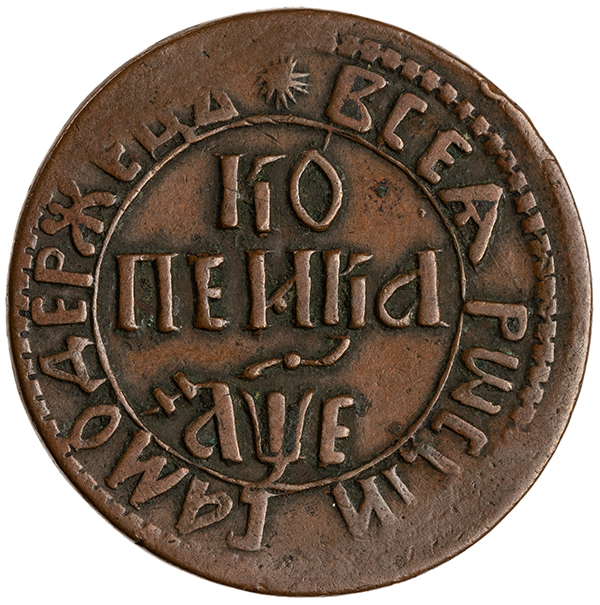
To coordinate his coinage with western Europe, Peter cut the value of the kopek so that the ruble of 100 kopeks, which he issued in 1704, was equivalent to a silver thaler. This made Russian coinage also the first decimal monetary system. This coin bears a bust of the tsar on the obverse and the double-headed eagle emblem of Muscovy on the reverse, which became a Russian national symbol for many centuries ahead (fig. 7).
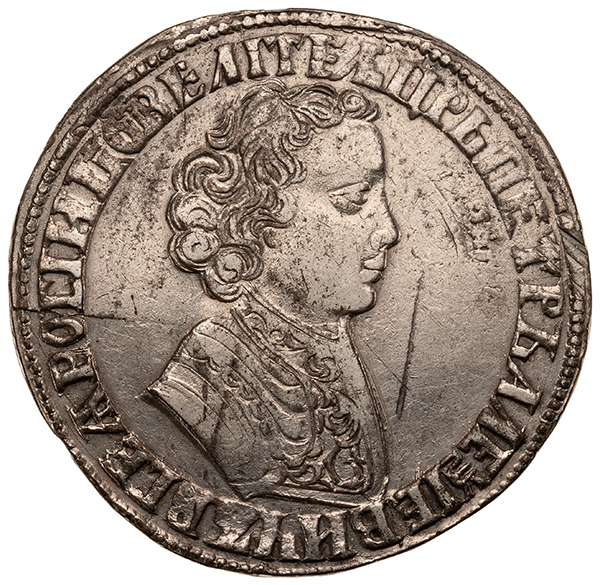

Another monetary innovation during Peter’s reign was the introduction in 1701 of a gold coin, the chervonets, which corresponded in value to the European ducat. The weight of this coin was around 3.458 grams of .986 fine gold. Coins of 2 chervontsy (around 6.94 g) were minted as well. These coins were mostly used only for foreign trade. Both of these denominations bear a laureate profile bust of Peter on the obverse with the inscription “Tsar Petr Alekseevich”. On the reverse there is a double-headed eagle, the date of minting, and the inscription “Vse Rosiskiy Samoderzhets” (autocrat of all Russia). For domestic trade, gold coins valued at 2 rubles were preferred. This denomination featured the tsar’s bust on the obverse and an image of Saint Andrew with his X-shaped cross on the reverse (fig. 8).


Peter’s modernization measures sped up Russia’s acculturation to western Europe; however, they met opposition from the country’s aristocracy and the Orthodox Church, which preferred to continue following medieval tradition. Among the tsar’s new measures was a decree requiring men to shave their beards. Most Russian men of that time took great pride in their beards and resisted this innovation. Eventually, the law was relaxed somewhat, allowing men to pay a tax to keep their beards, the amount being from 30 to 100 rubles, depending on the individual’s social status. A special beard-tax token was given as proof that the tax had been paid. This token-receipt depicted a mustache and beard with Russian words that translate as “money paid” on one side and a two-headed eagle with the date on the reverse. Collected from 1699, this beard tax probably yielded a large income for the state, because it was not canceled until long after Peter’s death in 1725 (fig. 9).


Seeking European allies against Sweden as well as new trade agreements, Peter traveled around western Europe again, nineteen years after his first western voyage. On April 21, 1717, Peter arrived in France, where he stayed for two months and was welcomed with great ceremony. His portrait was painted by Jean-Marc Nattier (1685–1766, fig. 10), one of the leading portrait painters of the reign of Louis XV.

During this travel, Peter sought out developments in France that he could adapt as reforms for his own state. In Paris he visited the Academy of Sciences and became an honorary member. He also visited the Paris Observatory and the Gobelins manufactory, which inspired the creation of a tapestry workshop in his new capital. The tsar also visited the Paris Mint. This visit to the mint was commemorated by a medal engraved by the famous Jean Duvivier (1687–1761), who later became the official medalist of Louis XV. The image of Peter on the obverse is accompanied by an inscription that describes him as emperor: PETRUS ALEXIEWITZ TZAR MAG. RUSS: IMP (Peter Alexeevich, Great Tsar, Russian Emperor, fig. 11).
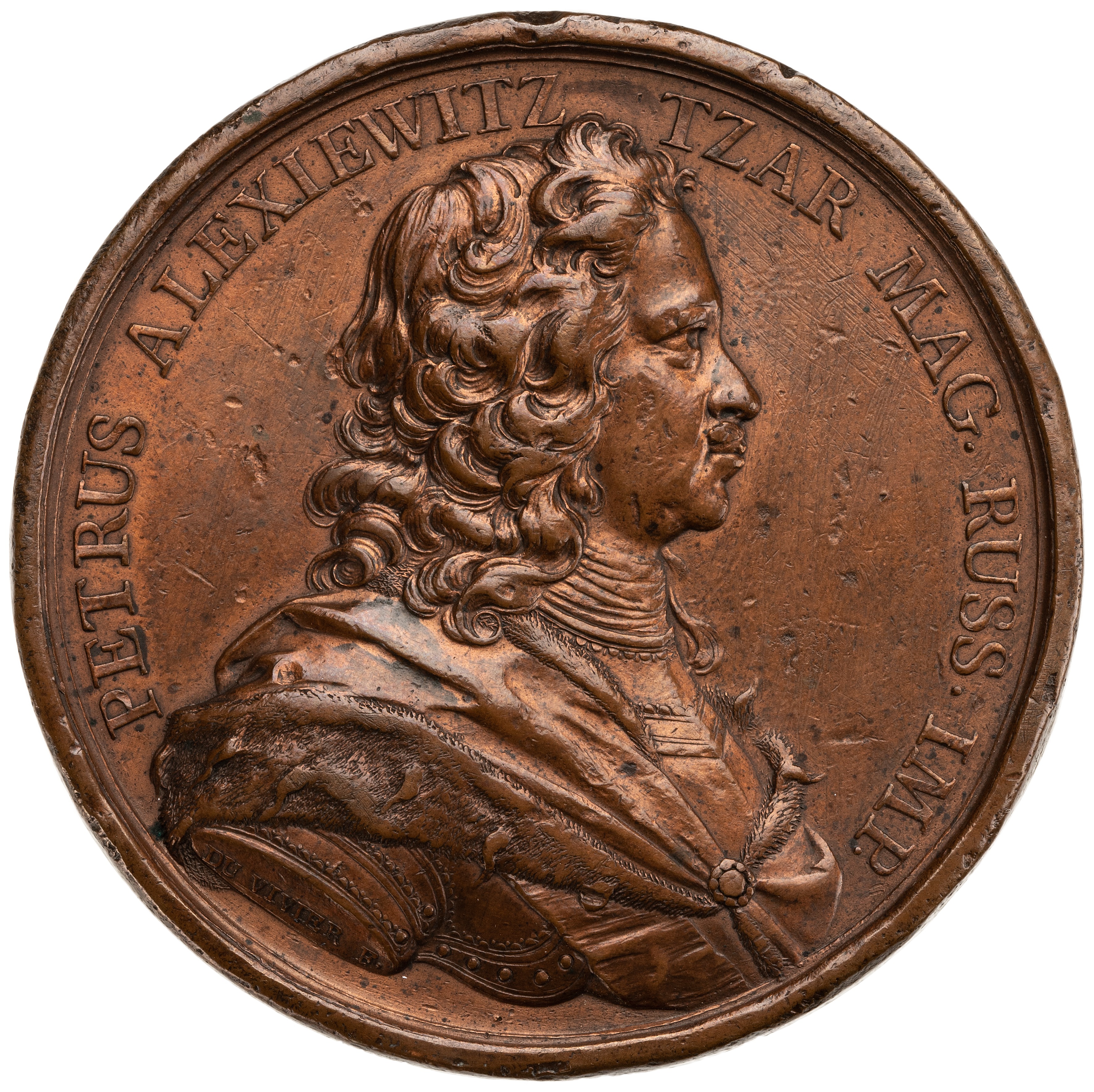

Four years later, soon after the end of the war with Sweden, in October 1721 Peter officially adopted the western title “emperor” in addition to his traditional Byzantine-style titles “tsar” and “autocrat”. It was a statement that he achieved his goal of making Russia into a European empire.


